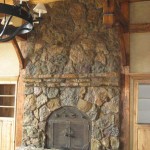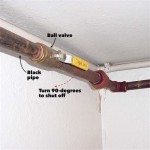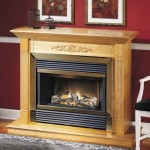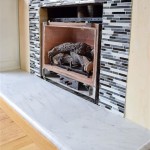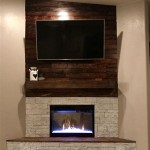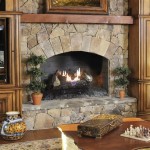Achieving Crystal-Clear Fireplace Glass: A Comprehensive Guide
A fireplace serves as a focal point within a home, providing warmth and ambiance. However, the accumulation of soot and creosote on the glass door can detract from its aesthetic appeal and impair the viewing experience. Maintaining clean fireplace glass is essential not only for visual enjoyment but also for optimal fireplace performance and safety.
The buildup on fireplace glass is primarily composed of unburned hydrocarbons, ash, and creosote, all byproducts of wood combustion. These substances condense on the cooler surface of the glass, forming a stubborn film that can progressively obscure the flames. Regular cleaning is crucial to prevent the hardening of this residue and maintain the clarity of the glass.
Understanding the Causes of Dirty Fireplace Glass
Several factors contribute to the rapid accumulation of soot and creosote on fireplace glass. Identifying these causes can help in implementing preventative measures to minimize cleaning frequency.
Wood Type and Moisture Content: The type of wood burned significantly impacts the amount of residue produced. Softwoods, such as pine, tend to produce more smoke and creosote than hardwoods like oak or maple. This is due to the higher resin content in softwoods. Furthermore, burning wood with high moisture content leads to incomplete combustion, resulting in increased smoke production and subsequent buildup on the glass. Ideally, wood should be seasoned (dried) for at least six months to a year before burning, achieving a moisture content below 20%.
Airflow and Ventilation: Proper airflow is essential for efficient combustion. Insufficient air supply can lead to smoldering fires, which generate more smoke and soot. Ensure that the fireplace damper is fully open and that the chimney is properly ventilated. Obstructions in the chimney, such as bird nests or creosote buildup, can impede airflow and exacerbate the problem. Regular chimney inspections and cleaning are essential for maintaining optimal airflow.
Burning Practices: The way a fire is built and maintained also affects the amount of soot deposited on the glass. Building small, hot fires is preferable to large, smoldering ones. Small fires burn more efficiently, generating less smoke and creosote. Overloading the firebox with wood can also restrict airflow and lead to incomplete combustion. It is important to follow the manufacturer's recommendations for wood load limits.
Effective Cleaning Methods for Fireplace Glass
Various methods can be employed to clean fireplace glass, ranging from commercially available cleaners to homemade solutions. The choice of method depends on personal preference, the severity of the buildup, and the type of fireplace glass.
Commercial Fireplace Glass Cleaners: Numerous commercial cleaners are specifically formulated for removing soot and creosote from fireplace glass. These cleaners often contain solvents and detergents that dissolve and lift the residue. When using commercial cleaners, it is imperative to follow the manufacturer's instructions carefully. Typically, the cleaner is sprayed onto the glass, allowed to sit for a few minutes, and then wiped clean with a cloth or paper towel. Adequate ventilation should be ensured during the cleaning process, and protective gloves are recommended.
Homemade Cleaning Solutions: Several effective homemade cleaning solutions can be prepared using readily available household ingredients. One popular method involves using a mixture of vinegar and water. The acidic properties of vinegar help to dissolve the soot and creosote. Another effective solution can be made using baking soda and water. The slightly abrasive nature of baking soda helps to scrub away stubborn residue. To use these solutions, apply them to the glass with a sponge or cloth, allow them to sit for a few minutes, and then scrub gently. Rinse the glass thoroughly with clean water and dry with a clean cloth.
The Newspaper and Ash Method: This method utilizes the abrasive properties of wood ash and the absorbency of newspaper. Dampen a sheet of newspaper and dip it into the cool ash at the bottom of the fireplace. Gently rub the newspaper with ash onto the glass, using circular motions to loosen the soot and creosote. The ash acts as a mild abrasive, while the damp newspaper helps to lift and absorb the residue. Once the glass is clean, wipe it down with a clean, damp cloth to remove any remaining ash. This method is a cost-effective and environmentally friendly alternative to chemical cleaners.
Razor Blade Scraping: For particularly stubborn buildup, a razor blade scraper can be used. This method is most effective on smooth glass surfaces. Exercise extreme caution when using a razor blade to avoid scratching the glass. Hold the blade at a shallow angle and gently scrape away the residue. Use short, overlapping strokes and avoid applying excessive pressure. After scraping, wipe the glass clean with a damp cloth.
Preventative Measures to Minimize Glass Soiling
While regular cleaning is necessary, implementing preventative measures can significantly reduce the frequency and severity of soot buildup on fireplace glass. These measures focus on optimizing combustion efficiency and minimizing smoke production.
Burning Seasoned Wood: As previously mentioned, burning seasoned wood is crucial for efficient combustion. Ensure that the wood has been properly dried for at least six months to a year before burning. Using a moisture meter can help to verify the moisture content of the wood. Seasoned wood burns hotter and cleaner, producing less smoke and creosote.
Controlling Airflow: Proper airflow is essential for complete combustion. Ensure that the fireplace damper is fully open and that the chimney is clean and unobstructed. Adjust the air vents on the fireplace to optimize airflow and promote efficient burning. Avoid overloading the firebox with wood, as this can restrict airflow and lead to incomplete combustion.
Regular Chimney Maintenance: Regular chimney inspections and cleaning are vital for maintaining optimal fireplace performance and safety. A clean chimney ensures proper ventilation and reduces the risk of chimney fires. Schedule a professional chimney sweep to inspect and clean the chimney at least once a year, or more frequently if the fireplace is used extensively. A chimney sweep can remove creosote buildup and identify any potential problems that could affect airflow and combustion efficiency.
Using Fireplace Inserts or Doors: Fireplace inserts and tight-fitting doors can improve combustion efficiency and reduce smoke emissions. Inserts are designed to fit inside existing fireplaces and provide more controlled combustion. Fireplace doors help to contain the fire and reduce the amount of air drawn from the room, leading to more efficient burning. These features can help to minimize soot buildup on the glass and improve overall fireplace performance.
Burning Smaller, Hotter Fires: Building smaller, hotter fires is preferable to large, smoldering ones. Small fires burn more efficiently, generating less smoke and creosote. Use kindling and small pieces of wood to start the fire and gradually add larger pieces as the fire establishes itself. Avoid letting the fire smolder for extended periods, as this produces more smoke and residue.
Cleaning fireplace glass is an ongoing maintenance task that contributes significantly to the enjoyment and longevity of a fireplace. By understanding the causes of soot buildup, implementing effective cleaning methods, and adopting preventative measures, homeowners can maintain crystal-clear fireplace glass and create a warm and inviting ambiance in their homes. Focusing on wood quality, proper airflow, and consistent maintenance will ensure a cleaner burning experience and a more visually appealing fireplace.

Cleaning The Inside Of Gas Fireplace Glass Thrifty Decor Diy And Organizing

How To Clean Gas Fireplace Glass

How To Clean Your Fireplace Glass 6 Steps With S Instructables

How To Clean Hazy Gas Fireplace Glass Nonprofit Home Inspections

How To Clean Fireplace Glass Get Rid Of White On Gas

How To Clean Your Fireplace Glass Avenue Road Masonry

How To Clean Fireplace Glass Get Rid Of Dust Inside Electric

Fireplace Fire Glass Installation Guide Pit Essentials

How To Clean Fireplace Glass Doors Vertical Chimney Care

How To Clean Fireplace Glass Get Rid Of Dust Inside Electric
Related Posts

